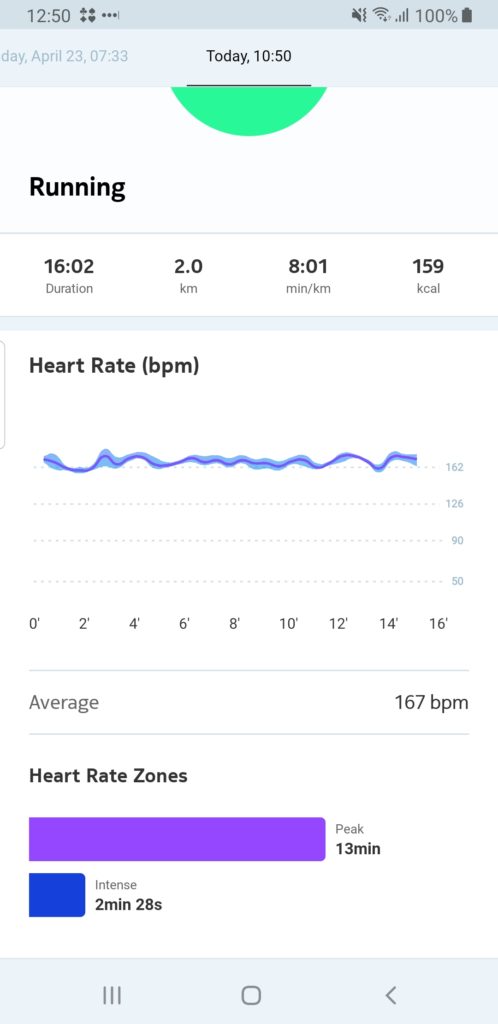I have a tendency to dive all-in when I undertake something, especially something new. When it’s learning about a new-to-me subject, I start reading books and articles and forums and it’s hard to satiate my thirst for more and deeper knowledge. I tend to keep on reading way past feeling tired, because it’s kind of addictive. I don’t feel great afterwards, but I can’t seem to stop.
When the subject is more physical, a similar thing happens. I read about it lots, and then I try to put all my new knowledge into practice immediately. My knowledge is usually much further along than my skill level. This can set me up for disappointment, and for the trap that I confuse gaining theoretical knowledge about a skill with actually wanting to master the skill. Sometimes it’s just enough to learn about a subject without putting in the hours to physically master it as well. Not everything has to become a new hobby, and not everything has to be mastered to perfection. It can be a temporary, fleeting interest.
In the past few weeks, I’ve noticed this mechanism in myself again, and I’ve pulled it out of my subconscious to try and make sure that I don’t trip over it. The first time was when I decided to sew a handbag, the Brooklyn Bag. I had selected the fabric that I was going to use. The outside of the bag would be pretty purple tweed, and I ordered some faux leather and a beautiful floral fabric as a contrast. I was a little bit scared to start cutting, because it seems so definitive.

In contrast, when you start a knitting project, you can always frog it if you’re not happy, and then you can just repurpose the yarn. With sewing, that option is not really there once you cut the pattern pieces, and I did not trust myself enough yet to not make mistakes.
But then I remembered that I could probably do it, as long as I took my time to focus properly. During past projects I have made the mistake sometimes to just go on and on when things were going fine, until they weren’t. And that would usually mean that the finished item would not be as nice as I wanted it to be because of mistakes that I made and tried to fix. Once I am tired, my decision-making ability becomes compromised, and I start doing things that I would not do if my mind was still fresh. So if I could limit myself to only work on the project when I was still feeling well, I should be doing okay.
I decided to start cutting the pattern pieces first, and once that was done, I would check in with my body and mind and see if I could do more. Would it work?
There were many pattern pieces, some for the outer fabric, some for the contrasting fabric, and some for the lining. Some pieces were optional for if you were using woven fabric instead of vinyl, so I had to pay close attention to select the right pieces and fabrics to cut. I had to add interfacing too. It was quite a lot of work. Cutting, pressing, cutting, pressing…

When I had finished cutting out all the pieces, it was two-and-a-half hours later. I was still in my cutting-flow and feeling fine, but when I stopped and sat down, the fatigue came rushing in. That’s the treacherous bit: I’m not aware of how tired I am until I stop and feel. Which I’m glad I did, because I was totally worn-out. I should have stopped earlier, in hindsight, but at least I did not botch the project. Next time, I’ll set a timer instead, because I had grossly underestimated the cutting effort. I’m still kind of proud of myself, because this is progress already. And I will continue working on the bag this weekend.
I have also been doing another activity: running. Yes, you’ve read that correctly. I used to hate running, because my steps resonate in my head, and my lungs start to ache real fast. But with this lockdown, my body was screaming for some movement. I had just started swimming before the lockdown, but the pools are closed now. My body felt like running, like doing something intense. It did feel a bit scary to just jump in, though, because of my knee, so I e-mailed my PT to ask him if he thought that jogging would be okay for my knee. He replied that it could be fine, I just had to make sure that I kept an eye on it, and build it up slowly.

So last Monday, I put on my running shoes, and I went outside. I ran slowly, more of a jog, and decided to keep it short today. There’s a canal close-by, and I decided to run around it (which is about 1 km). The running itself felt wonderful, but when I was back home, I had chest pain and I kept coughing for an hour or so. I had only been jogging for seven minutes.
I did not want to give up immediately because of this, so I went looking for information on the internet. Yes, it could be exercise asthma, but even then there were some things I could do to try and make it better. One tip I found was breathing in through the nose as much as possible to filter and warm up the air. The other tip was breathing out longer to avoid clenching up your breathing muscles. The next day my leg muscles were sensitive, but my knee was doing fine. Great!

I went jogging again on Thursday, and put the tips into practice. What a difference! After my round I felt fine and not tired at all, no pain, so I decided to add another short round to the exercise, and after that I did stop. I had run about 1.7 km in 14 minutes. My breathing was fine, and my muscles and knee were fine too. No coughing afterwards!
So today I went out again and made my round slightly longer (2 km this time) to see how that would go. It actually went well, although it was a bit less smooth than the last time. I feel fine while jogging, but my nose tends to become stuffed (light hay fever) and then it becomes a bit annoying to breathe through it. Note for the next time: bring a tissue.
When I came back home, and went from running to walking, I felt that I had actually been working harder than I thought, so I went up the stairs slowly (I live on the second floor). But as I went up, I start to feel a bit nauseous. I knew that feeling, it’s the first step for fainting. So I sat down to make sure that my heart did not have to work as hard, and I started to breathe deeply and slowly. It helped, I started to feel better.

So off I went to investigate what had happened. I think that I understand it now. I regularly have dizzy spells when I stand up or when it’s warm, and I think that my blood pressure cannot rise quickly enough to support me in those moments (either postural hypotension or orthostatic intolerance). It takes a moment to catch up and support my body.
When going from walking to going up the stairs my body needed more oxygen, and that may have been too much to ask after exercising. I checked my heart rate and it was at 167 during the jogging, which is in the high range.
I read a bit more about heart rates and training and I found a website about training to jog with a lower heart rate. That sounds like a great approach for my situation, and I will give it a try on my next run (probably Monday). It’s going to be a challenge to keep my heart rate down like that, but I think in the long term it will be better for my body. So again, I have to pace myself and manage my expectations. Channel my enthusiasm and energy into something that benefits me long-term. Gosh, it almost sounds as if I’m growing up.
What I do appreciate is that I’m much more aware of my body’s cues now that I’ve started to pay attention and take myself seriously. That enables me to develop my own personal, informed approach to things that I do and to have a fair view of what’s feasible for me. It empowers me, because I still tend to compare myself to others too much. Becoming an expert on how I work allows me to trust myself more.

I don’t have to look far to find the perfect example. Freya is doing exactly that. She paces her activity quite naturally. And last Thursday it was her birthday. She’s sixteen years old now! I gave her a feather toy. No special snacks because of her kidney diet, but extra cuddles, sure! She is a happy kitty.






